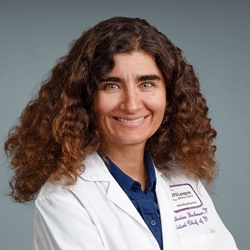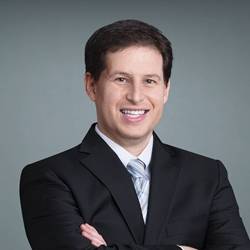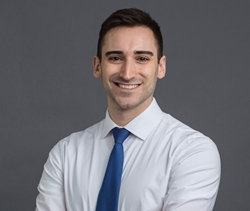It was late April of 2020 when Miriam Simon’s 90-year-old mother awoke in the middle of the night, struggling to breathe. Considering her mother’s advanced age and existing health conditions, Simon immediately called 911. When first responders arrived, they recommended taking the elderly woman to the hospital, but Simon pleaded to keep her home. “I was petrified from the stories that I had heard about patients being isolated from their families,” says Simon, of New York City. “I am always with my mother, and I know everything she needs. I was really scared about not being with her in the hospital to make sure all of her needs were met, and, God forbid, what if she died and I wasn’t there?”
Since the first COVID-19 cases were diagnosed in the U.S. in early 2020, hospitals nationwide have restricted visitations to reduce the virus’ spread. While the practice has undoubtedly saved lives, healthcare providers have struggled to care for the surge of critically ill patients and maintain regular communication with families about patients’ treatments and conditions. Luckily for Simon, her mother was transported to NYU Langone Health, where Katherine A. Hochman, MD, associate professor of medicine and associate chair of quality in the department of medicine, had recently spearheaded a program to ensure families receive regular patient updates. It’s called Family Connect — and radiologists and medical students are essential to its success.

Katherine A. Hochman, MD, associate professor of medicine and associate chair of quality in the department of medicine at NYU Langone Health, conceived the idea for Family Connect while quarantined with COVID-19. |
Through the program, NYU Langone radiologists and medical students from NYU Grossman School of Medicine partner to review each patient’s chart, virtually participate in interdisciplinary rounds, and call families to provide daily updates and answer questions. For family members like Simon, the program has provided relief and empowerment during these challenging times. “I was really impressed with how much effort they put into making sure that I felt like I was part of the process of my mother’s healthcare,” Simon says. “It made it so much easier for me.”
Quarantine Epiphany
Hochman conceived the idea for Family Connect while she was quarantined for two weeks with her own bout of COVID-19, which she had contracted while caring for infected patients at the hospital. “I didn’t have a terrible case, so I was able to work from home,” says Hochman, who is also assistant chief of medicine at Tisch Hospital and section chief in NYU Langone’s division of internal medicine. “I thought about my experience on the wards and how there’s this big disconnect: Families don’t get information because they can’t come visit, and the care teams are too overwhelmed to call families, who, in the meantime, are upset and anxious. We’re a patient-centered institution, so I knew there had to be a way that we could outfox this situation.”
Hochman thought about enlisting the help of medical students, many of whom are eager to care for COVID-19 patients but are currently prohibited from the wards for safety reasons. She held a virtual meeting with 15 students and proposed that they work with attending physicians to call and share timely and accurate information with families each day. The students immediately liked the idea. “It was a nice way for us to contribute to patient care and help the doctors on the front lines,” says Phil Carlucci, a second-year medical student. “It also offered an opportunity for us to continue to learn medicine by listening in on rounds and being paired with attendings to ask questions.”
At the same time, NYU Langone’s radiology team — which had seen a significant decrease in its case load due to national recommendations to postpone non-urgent medical care — was searching for ways to contribute to the COVID-19 response. When Michael P. Recht, MD, Louis Marx professor and chair of NYU Langone’s department of radiology heard about Family Connect from one of Hochman’s colleagues, he told his team about it. Immediately, 65 attending radiologists volunteered to serve as faculty mentors on the program, working alongside the medical students to monitor patients and call families with updates.
“During a video conference with the radiologists, Dr. Hochman explained that families were really being isolated,” Recht recalls. “Family Connect sounded like an incredible program to help bridge the gap and have a meaningful impact on patient care. We were eager to get involved.”
Operational Development
Recht appointed Myles T. Taffel, MD, associate professor in the department of radiology and associate section chief of abdominal imaging, as the radiology lead to operationalize the program with Hochman. One of Taffel and Hochman’s first steps was to ask front-line care teams to conduct their interdisciplinary rounds through videoconference, allowing the Family Connect volunteers to attend virtually. “For interdisciplinary rounds, the doctors, nurses, social workers, care managers, and physical therapists usually meet in person to discuss patient cases,” Hochman explains. “But nobody was excited about getting together anymore with COVID-19 spreading, so they were happy to use videoconferencing. We just had to schedule all of the conferences.”

Myles T. Taffel, MD, associate professor in the department of radiology and associate section chief of abdominal imaging, worked with Hochman to operationalize the Family Connect program. |
Taffel orchestrated a team of radiologists to pair with medical students and oversaw other program logistics. These details included working with the hospital’s information technology team to add a
Family Connect care coordination note to the electronic health record (EHR). Program volunteers use the note to document each call they have with family members. “As radiologists, we’re not used to writing clinical update notes, so we worked with Dr. Archana Saxena, NYU Langone Hospital — Brooklyn medical director for Epic clinical transformation and clinical informaticist, to create a template note that was easy to complete,” says Taffel. “It helps keep the front-line providers informed about our communications with family members, which is important for coordinated care delivery.”
In the meantime, Hochman led a webinar to train the radiology and medical student volunteers about how to gather relevant patient information and share it with families. She also taught them basic facts about COVID-19 and provided tip sheets about treatment regimens. “From my bedroom quarantine, I did a virtual orientation to teach the volunteers how to use our EHR and how to log into the virtual interdisciplinary rounds,” says Hochman. “I was insistent that the volunteers get to know their patients just as they would under a regular circumstance on the wards. This way, they could call families with confidence and be sure that the information they shared was accurate."
Swift Implementation
From the time the radiologists got involved, Hochman and Taffel launched the program in just five days. For the radiologists, it required a willingness to step out of their comfort zones and learn along the way. “When we started the program, we told the team that we knew we weren’t going to be perfect and that there were going to be some learning curves,” Taffel says. “Radiologists are inherently focused on precision, so I had to convince some of them that an accelerated launch was the way to go. I explained that we needed to run with it because our hospital colleagues couldn’t wait for us to perfect the program — they needed our help communicating with families immediately.”
Through the program, each radiologist has been paired with a medical student to monitor patients and keep their families informed. Each day, the pairs review the charts of the six to 10 patients they are responsible for monitoring and attend the virtual rounds for those patients. With that information in hand, the pairs call each patient’s family around the same time every day to share updates about the patient’s condition and answer questions. “Mainly, the families want to know whether their loved ones are getting better, worse, or remaining the same,” explains Taffel, noting that families can also call the hospital’s patient experience office’s new Family Resource Center, which will help connect them with their assigned radiologist/medical student pair at any time. “It’s incredibly rewarding to be able to provide loved ones with this information; in many cases it eases their anxiety.”
Another valuable aspect of the program is that it has facilitated knowledge sharing. The radiologists have routinely attended internal medicine’s noontime continuing medical education-accredited conference series to learn more about COVID-19’s disease progression and evolving treatment regimens. “In the last two months, I have probably attended more internal medicine conferences than radiology conferences,” Taffel quips.

Phil Carlucci, a second-year medical student at NYU Grossman School of Medicine, says the program allowed him and other students to continue learning medicine while also having a meaningful impact on patient care. |
The radiologists have been able to pass this and other knowledge on to the medical students. “I learned a lot from listening to Dr. Taffel talk with families, especially when they had very specific questions, and when he has explained the nuances of the disease,” says Carlucci, who has been paired with Taffel. “We’ve also had an opportunity to review our patients’ imaging examinations together, and he’s taught me some basic radiology, which is helpful for my training. As medical students, we don’t get a lot of radiology experience before starting our clinical rotations, so this will be very valuable for me as I move through my core clerkships.”
Critical Communication
Since the program began, the radiologists and medical students have spoken with more than 3,000 families. In many instances, the pairs have been able to share comforting news with families, but in others, they’ve had to inform families that their loved ones’ conditions were worsening. In these cases, the pairs have served as coordinators to ensure families can say their last goodbyes through video calls or that care teams deliver a final “I love you” from families to patients.
The experience has reinforced the importance of speaking to patients and families and including them in care decisions, Taffel says. “There is a great deal that is unknown related to COVID-19,” he says. “The radiologists have been empathetic to this. It has reminded us about the importance of keeping patients and families at the center of care.” Carlucci agrees. “I’ve been surprised by the relationships we’ve been able to build with these families just by giving them a phone call once a day,” he says. “It really speaks to the value of this program and how important these phone calls are to families. I can’t even imagine what it’s like to not be able to visit your family member who’s in the hospital suffering from a disease that very little is known about.”
Although Simon’s mother never tested positive for COVID-19, the tests were presumed to be false-negatives, and she was treated as though she had the disease. Simon says that the calls she received from Taffel and Carlucci during the five days her mother was in the hospital before being discharged were critical. They allowed her to ask questions about her mother’s test results that she reviewed through the hospital’s patient portal and gave her confidence that her mother’s needs were being met. “Dr. Taffel, Phil, and all of the people with Family Connect were really my support going through this difficult time. Whatever questions I had or whatever requests I made, they took care of them,” Simon observes. “It was really comforting to me.”
Lessons Learned
With the COVID-19 surge slowing in New York, NYU Langone’s radiology department is beginning to resume its regular imaging schedule. In doing so, many of the radiologists plan to leverage the lessons that they learned through Family Connect to improve imaging care. “In particular, the program has helped many radiologists recognize the disparities in healthcare literacy within our patient population,” Taffel says. “An understanding of this disparity is becoming increasingly important as more patients directly review their imaging reports via patient portals. As we return to our normal responsibilities, we will look for ways to address this issue and continue to engage patients in their care.”




